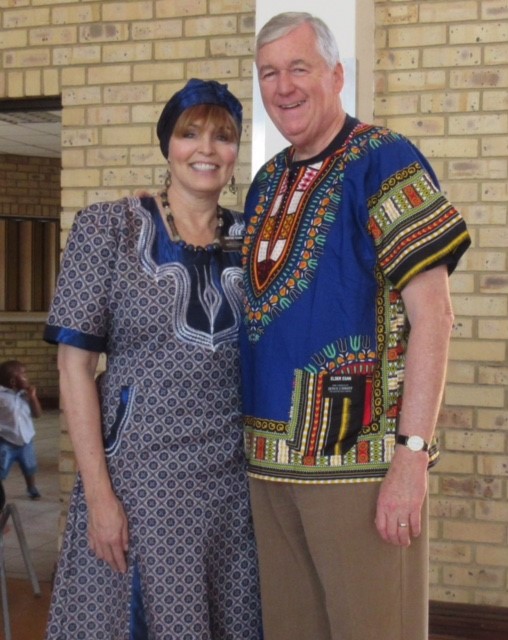The racial make-up of Johannesburg is 64% black, 14% coloured (mixed race), 14% white and 8% other (mostly Asian), so we are definitely a minority. Although South Africa is known as an English speaking country, English is at best the second language for the vast majority of the population. Only 31% speak English as their first language, 20% Zulu, 12% Afrikaans and 5% Xhosa. The other 32% grew up speaking other native languages in their homes and neighborhoods. There are 11 official languages recognized in South Africa, and all government documents must be provided in all 11 languages. However, all public schools in South Africa teach all students in English. Thus you hear English spoken in a huge variety of accents, none of which is familiar to American ears. And their English consists of many words, phrases and local idioms that we are not familiar with.
Johannesburg enjoys a sunny "California" climate, with the summer months (October to April) characterized by hot days followed by afternoon thundershowers and cool evenings, and the winter months (May to September) by dry, sunny days followed by cold nights. Temperatures in Johannesburg are usually fairly mild due to the city's high elevation, with an average maximum daytime temperature in January of 78°F, dropping to an average maximum of around 61°F in June. Winter is the sunniest time of the year, with mild days and cool nights, dropping to 39°F at night in June and July. The temperature occasionally drops to below freezing at night in the winter, and can cause frost. Snow is a very rare occurrence. The school year runs from January through November, with the month of December being both the summer break and Christmas break and the busiest time of year for tourists.
The Johannesburg LDS Temple, 2 miles north of the city center, was announced in 1981 and dedicated by President Gordon B. Hinckley August 24, 1985, during the Apartheid era. In the dedicatory prayer, he prayed, "May those who rule in the offices of government be inspired to find a basis for reconciliation among those who now are in conflict one with another. May the presence of Thy house on the soil of this land bring blessings to the entire nation." Indeed it has.
 |
| Johannesburg LDS Temple at 7 Jubilee Road, Parktown, Johannesburg, South Africa |


No comments:
Post a Comment